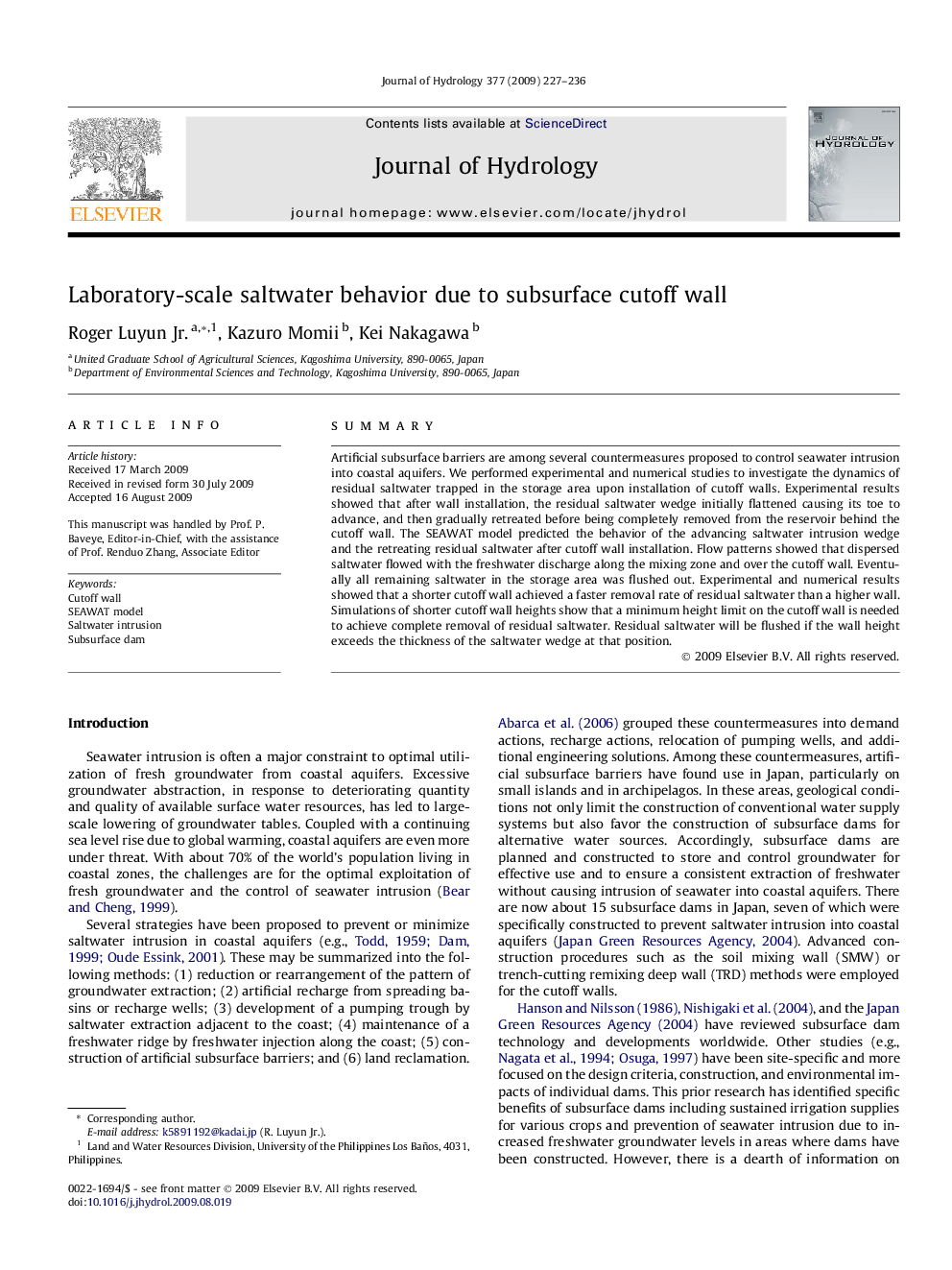| Article ID | Journal | Published Year | Pages | File Type |
|---|---|---|---|---|
| 4578732 | Journal of Hydrology | 2009 | 10 Pages |
SummaryArtificial subsurface barriers are among several countermeasures proposed to control seawater intrusion into coastal aquifers. We performed experimental and numerical studies to investigate the dynamics of residual saltwater trapped in the storage area upon installation of cutoff walls. Experimental results showed that after wall installation, the residual saltwater wedge initially flattened causing its toe to advance, and then gradually retreated before being completely removed from the reservoir behind the cutoff wall. The SEAWAT model predicted the behavior of the advancing saltwater intrusion wedge and the retreating residual saltwater after cutoff wall installation. Flow patterns showed that dispersed saltwater flowed with the freshwater discharge along the mixing zone and over the cutoff wall. Eventually all remaining saltwater in the storage area was flushed out. Experimental and numerical results showed that a shorter cutoff wall achieved a faster removal rate of residual saltwater than a higher wall. Simulations of shorter cutoff wall heights show that a minimum height limit on the cutoff wall is needed to achieve complete removal of residual saltwater. Residual saltwater will be flushed if the wall height exceeds the thickness of the saltwater wedge at that position.
